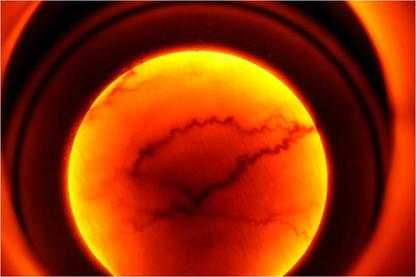Sclerotherapy
 Veinlite II Used in Sclerotherapy
Veinlite II Used in Sclerotherapy
Dr. Hopkins will develop a treatment plan for your individual case. An important concept in phlebology to treat the proximal sources of venous reflux (usually with ablation or microphlebectomy) before proceeding to sclerotherapy. Results of sclerotherapy treatment are impaired if done prior to treating proximal sources of reflux. Because of this, patients with symptoms or physical exam findings suggesting venous reflux should undergo a venous duplex ultrasound examination prior to sclerotherapy treatment. Dr. Hopkins wrote patient education articles these topics for the Union Demcrat and Amador Ledger Dispatch, and can be read here: Venous Reflux, Endovenous ablation, Microphlebectomy and Duplex Ultrasound is available here.
After proximal sources of venous reflux has been treated or ruled out with duplex ultrasound, many spider and varicose veins can be successfully treated with injection sclerotherapy. Sclerotherapy has been a well accepted method to treat varicose veins for decades. In fact, if the vein is large enough to allow a small needle, this is the best treatment.
An FDA-approved medication called sotradecol or polidocanol is injected into the veins using very tiny needles. This solution causes irritation to the inner (endothelial) lining of the veins resulting in closure of the veins. These veins then stop carrying blood and therefore visibly improves in appearance. A specialized fiberoptic lighting system (shown above) is used to tranilluminate the skin to allow for improved visualization of the veins being treated. This lighting system is called the Veinlite-II.
Treatment differs from patient to patient, depending on the extent of the varicosities (size and number). An average of two to five treatments is required in most cases to achieve a 70%-80% clearing. A 100% clearance of veins is not a realistic goal. The treatment sessions last approximately 30-60 minutes and are done at four to six week intervals to achieve optimal results.
After completion of the initial series of recommended treatments, successfully treated veins are either gone or are much less noticeable. However, patients with a history of spider veins tend to develop new ones (with or without treatment) and a yearly touch up may become necessary. Sclerotherapy is a treatment for spider veins and varicose veins, not a cure.
After proximal sources of venous reflux has been treated or ruled out with duplex ultrasound, many spider and varicose veins can be successfully treated with injection sclerotherapy. Sclerotherapy has been a well accepted method to treat varicose veins for decades. In fact, if the vein is large enough to allow a small needle, this is the best treatment.
An FDA-approved medication called sotradecol or polidocanol is injected into the veins using very tiny needles. This solution causes irritation to the inner (endothelial) lining of the veins resulting in closure of the veins. These veins then stop carrying blood and therefore visibly improves in appearance. A specialized fiberoptic lighting system (shown above) is used to tranilluminate the skin to allow for improved visualization of the veins being treated. This lighting system is called the Veinlite-II.
Treatment differs from patient to patient, depending on the extent of the varicosities (size and number). An average of two to five treatments is required in most cases to achieve a 70%-80% clearing. A 100% clearance of veins is not a realistic goal. The treatment sessions last approximately 30-60 minutes and are done at four to six week intervals to achieve optimal results.
After completion of the initial series of recommended treatments, successfully treated veins are either gone or are much less noticeable. However, patients with a history of spider veins tend to develop new ones (with or without treatment) and a yearly touch up may become necessary. Sclerotherapy is a treatment for spider veins and varicose veins, not a cure.
|
| ||||||||||||
